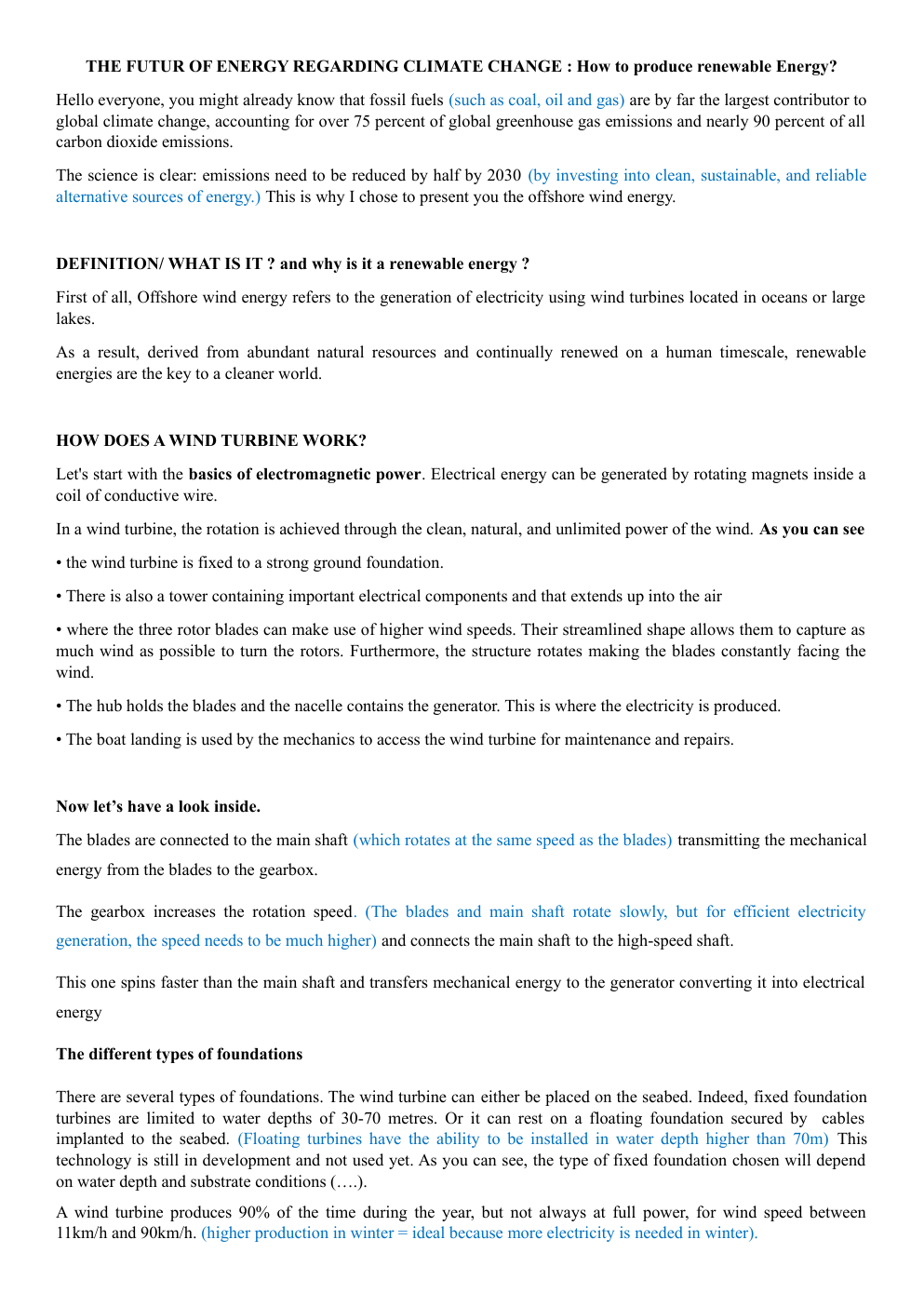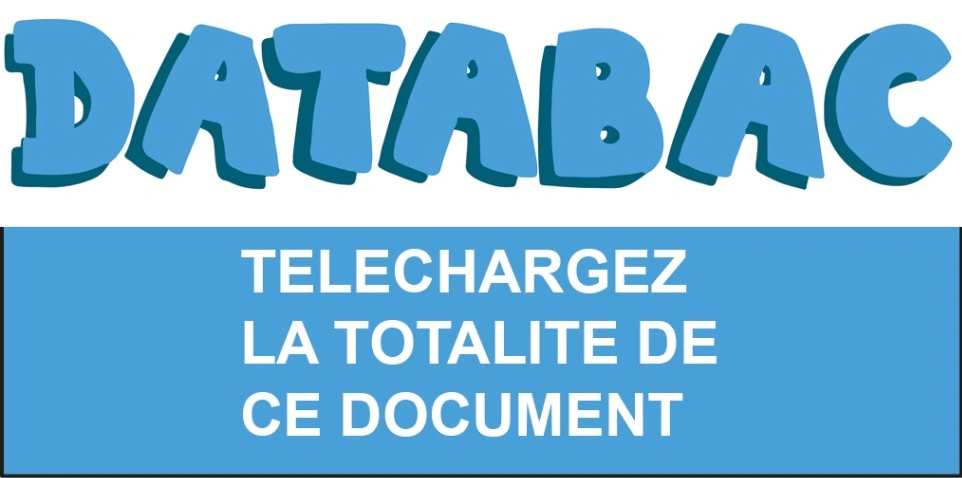THE FUTUR OF ENERGY REGARDING CLIMATE CHANGE : How to produce renewable Energy?
Publié le 21/05/2025
Extrait du document
«
THE FUTUR OF ENERGY REGARDING CLIMATE CHANGE : How to produce renewable Energy?
Hello everyone, you might already know that fossil fuels (such as coal, oil and gas) are by far the largest contributor to
global climate change, accounting for over 75 percent of global greenhouse gas emissions and nearly 90 percent of all
carbon dioxide emissions.
The science is clear: emissions need to be reduced by half by 2030 (by investing into clean, sustainable, and reliable
alternative sources of energy.) This is why I chose to present you the offshore wind energy.
DEFINITION/ WHAT IS IT ? and why is it a renewable energy ?
First of all, Offshore wind energy refers to the generation of electricity using wind turbines located in oceans or large
lakes.
As a result, derived from abundant natural resources and continually renewed on a human timescale, renewable
energies are the key to a cleaner world.
HOW DOES A WIND TURBINE WORK?
Let's start with the basics of electromagnetic power.
Electrical energy can be generated by rotating magnets inside a
coil of conductive wire.
In a wind turbine, the rotation is achieved through the clean, natural, and unlimited power of the wind.
As you can see
• the wind turbine is fixed to a strong ground foundation.
• There is also a tower containing important electrical components and that extends up into the air
• where the three rotor blades can make use of higher wind speeds.
Their streamlined shape allows them to capture as
much wind as possible to turn the rotors.
Furthermore, the structure rotates making the blades constantly facing the
wind.
• The hub holds the blades and the nacelle contains the generator.
This is where the electricity is produced.
• The boat landing is used by the mechanics to access the wind turbine for maintenance and repairs.
Now let’s have a look inside.
The blades are connected to the main shaft (which rotates at the same speed as the blades) transmitting the mechanical
energy from the blades to the gearbox.
The gearbox increases the rotation speed.
(The blades and main shaft rotate slowly, but for efficient electricity
generation, the speed needs to be much higher) and connects the main shaft to the high-speed shaft.
This one spins faster than the main shaft and transfers mechanical energy to the generator converting it into electrical
energy
The different types of foundations
There are several types of foundations.
The wind turbine can either be placed on the seabed.
Indeed, fixed foundation
turbines are limited to water depths of 30-70 metres.
Or it can rest on a floating foundation secured by cables
implanted to the seabed.
(Floating turbines have the ability to be installed in water depth higher than 70m) This
technology is still in development and not used yet.
As you can see, the type of fixed foundation chosen will depend
on water depth and substrate conditions (….).
A wind turbine produces 90% of the time during the year, but not always at full power, for wind speed between
11km/h and 90km/h.
(higher production in winter = ideal because more electricity is needed in winter).....
»
↓↓↓ APERÇU DU DOCUMENT ↓↓↓
Liens utiles
- the handmaid's tale: How far do you agree that Margaret Atwood makes resistance central to THT?
- How do the three documents interact to deal with the intersection of multiple identities?
- How did Roosevelt address the challenges of the Great Depression ?
- What are the influences of the Gilead society and how they have an impact on the woman’s lives?
- Work Energy & Power


